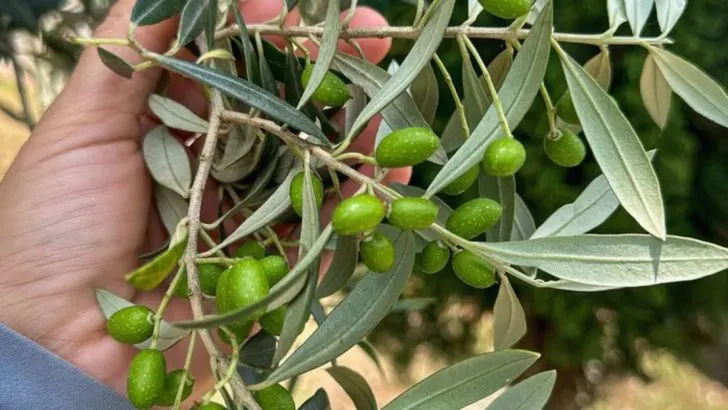Drought is no longer a rare inconvenience. It’s the new neighbor that overstays its welcome, turning lawns crispy and turning garden dreams into dry regrets.
But here’s the good news: some trees don’t flinch at the heat. They dig in deep, sip slowly, and stay green when everything else throws in the towel. These aren’t weaklings needing daily pampering—they’re survivors, built for the long haul.
Choosing the right drought-tolerant tree isn’t just smart. It’s a quiet rebellion against wasting water, a stand for beauty that doesn’t come at a cost. Shade, color, wildlife—yes, you can still have it all without babysitting a thirsty plant.
If you’re ready to plant with purpose—and still want a yard that turns heads—these 17 drought-tough trees are ready to rise to the challenge.
Olive Tree
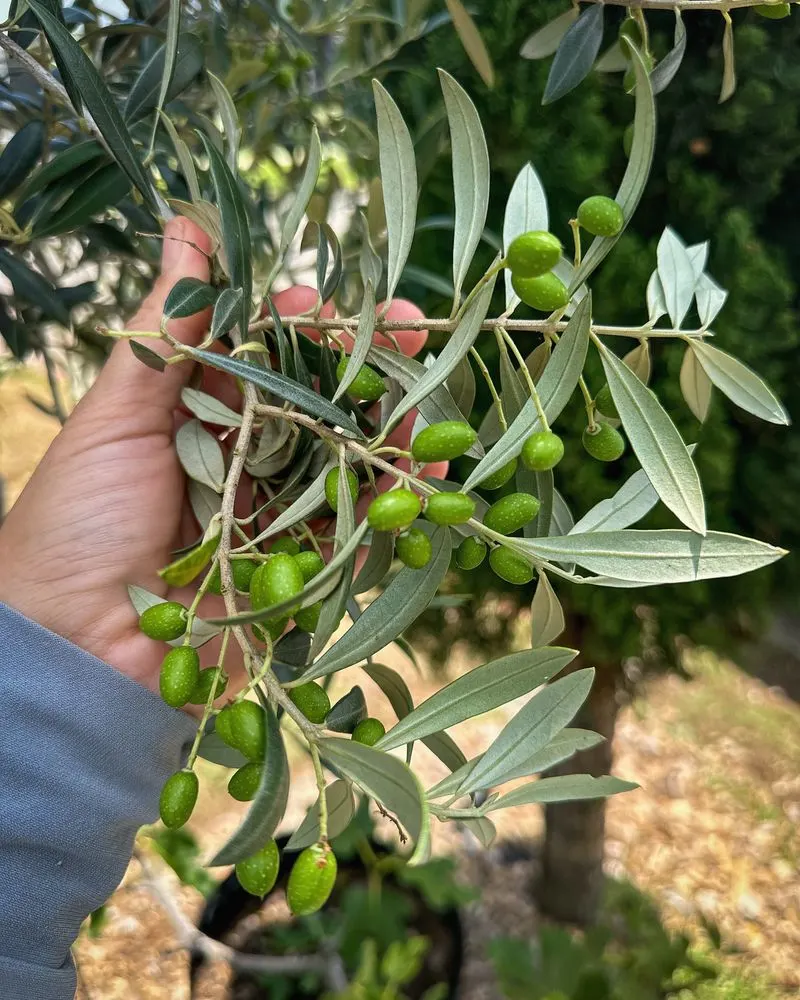
Renowned for its resilience, the olive tree thrives in the harshest climates. Its silvery leaves shimmer under sunlight, offering a Mediterranean charm to your yard. The gnarled trunk tells stories of endurance and longevity. Known for producing the olives that are pressed into oil, this tree requires minimal water once established. Plant it in a sunny spot, and watch it flourish as an emblem of strength and beauty. It’s not just a tree but a heritage plant, connecting you to ancient traditions. Allow it to be the centerpiece of your climate-resilient garden.
Crape Myrtle
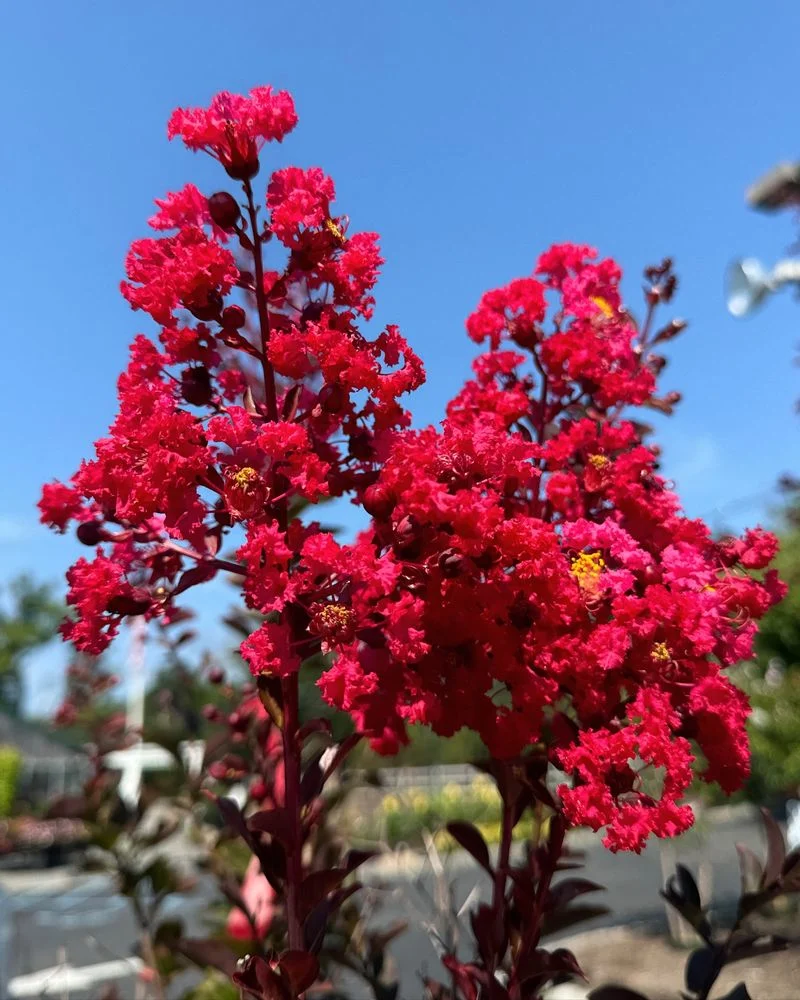
With flamboyant blooms that paint the summer in shades of pink, purple, and red, crape myrtle is a visual delight. This tree is not only drought-resistant but also attracts pollinators, enhancing your garden’s vitality. Its smooth, peeling bark adds texture and interest year-round. When planted in well-drained soil, crape myrtle stands as a testament to beauty under the sun’s relentless gaze. Pruning in late winter can encourage new growth and more abundant flowering. Embrace its elegance and its capability to endure the dry spells with grace.
Palo Verde
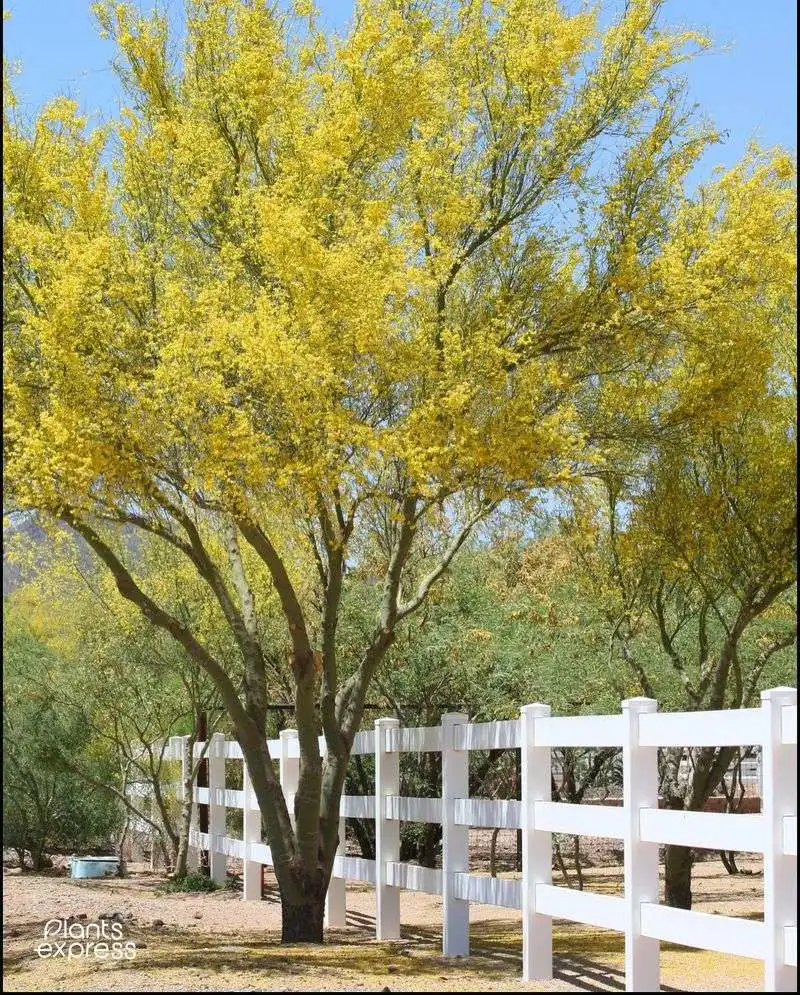
Known for its vibrant green bark and delicate yellow blossoms, the Palo Verde is a desert dweller that welcomes sunshine with open branches. This tree’s photosynthetic bark is an ingenious adaptation, helping it survive in arid environments. It thrives best with full sun exposure and well-drained soil. As it matures, its shade becomes a comforting retreat in hot, sunny climates. With minimal water needs, the Palo Verde stands out, creating an oasis of green amid the browns of a dry landscape.
Eastern Redbud

The Eastern Redbud heralds spring with a burst of rosy-pink blossoms covering its branches. This eye-catching display attracts butterflies and bees, making it a pollinator-friendly choice. Its heart-shaped leaves provide a lush canopy as the season progresses. Despite its delicate appearance, it holds its own against dry spells, once roots are deeply established. Suitable for small yards, it offers beauty without demanding much water. A symbol of renewal, it brings a splash of color to any drought-resilient garden. Its adaptability makes it a valuable addition to eco-conscious landscapes.
California Lilac

The California Lilac stands out with its clusters of powder-blue flowers and glossy green leaves. This native shrub adapts well to dry, rocky soils, making it a perfect fit for xeriscaping. From afar, its vibrant blooms create a wave of blue, offering a serene coastal vibe. Once established, it requires little to no supplemental watering. This drought-resistant beauty not only decorates your yard but also provides habitat for birds and beneficial insects. It’s a splendid choice for those looking to combine aesthetics with ecological mindfulness.
Juniper
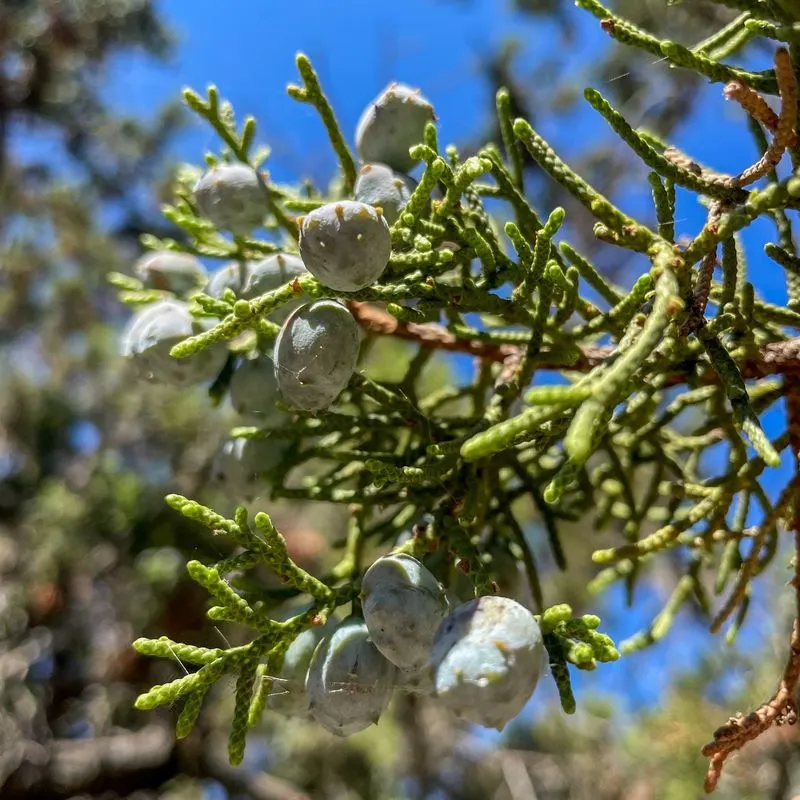
Junipers are robust evergreens that laugh in the face of dry conditions. Their blue-green needles and rugged bark contribute to a rustic, untamed beauty. Thriving in poor soils and requiring minimal maintenance, they are a staple for eco-friendly landscapes. Birds delight in their berry-like cones, adding life to your garden. With many species to choose from, they offer versatility in size and shape to fit various landscape designs. Their resilience makes them perfect for slopes and erosion control. They stand as sentinels of sustainability and grace.
Bottlebrush
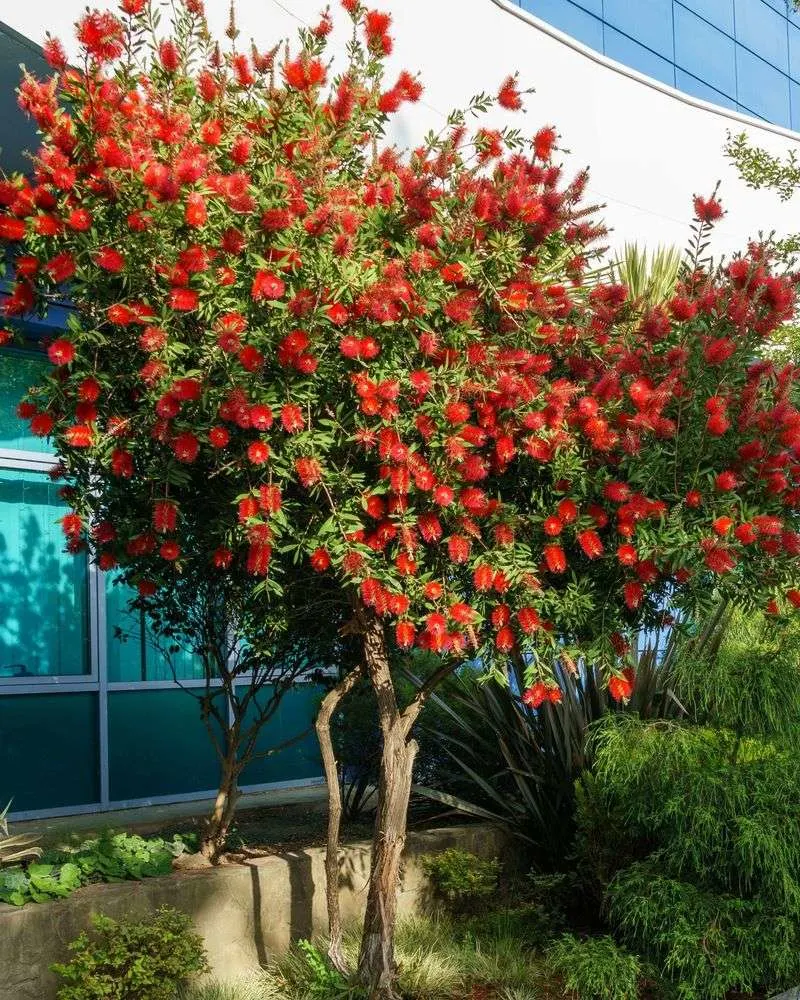
With its striking red, brush-like flowers, the bottlebrush is a magnet for hummingbirds and bees. This hardy tree boasts vibrant blooms that look stunning against its evergreen foliage. Originating from Australia, it thrives in sunny positions and well-drained soil. Minimal watering needs make it an ally in water conservation efforts. Regular pruning helps maintain its shape and encourages a profusion of flowers. The bottlebrush is a bold statement piece, bringing both color and ecological benefits to your garden, thriving beautifully in a drought-conscious landscape.
Desert Willow
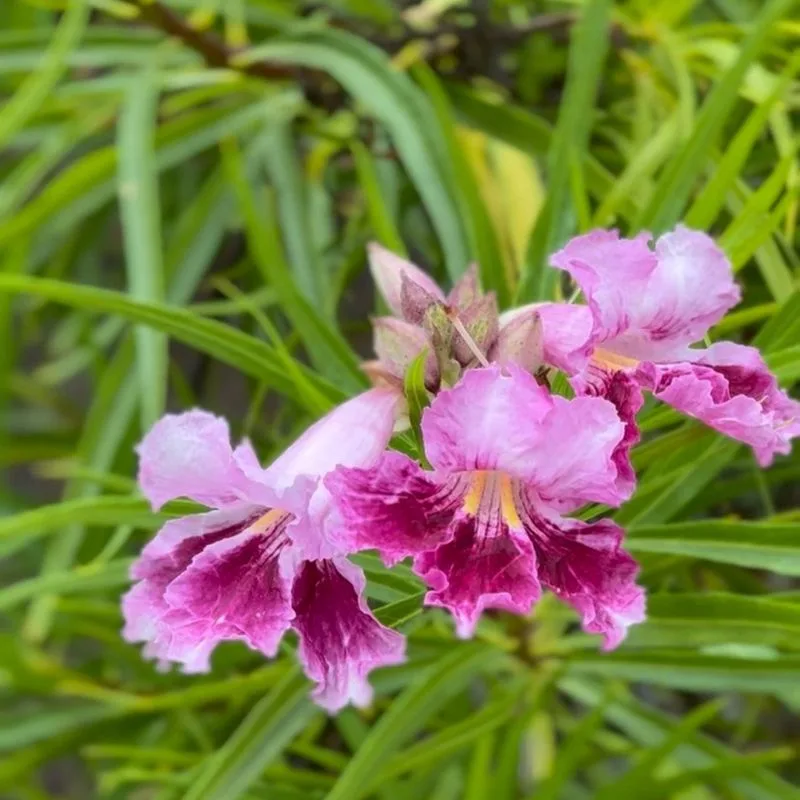
The Desert Willow graces the garden with its willow-like leaves and trumpet-shaped flowers, resembling an oasis in bloom. Despite its name, it is unrelated to true willows and far more drought-tolerant. The striking flowers attract pollinators, turning your yard into a wildlife haven. Preferring full sun and well-drained soil, it handles heat and drought with elegance. Its delicate appearance belies its tough nature. Perfect for water-wise landscapes, it infuses any space with a touch of desert charm, proving that beauty doesn’t need to be thirsty.
Texas Mountain Laurel
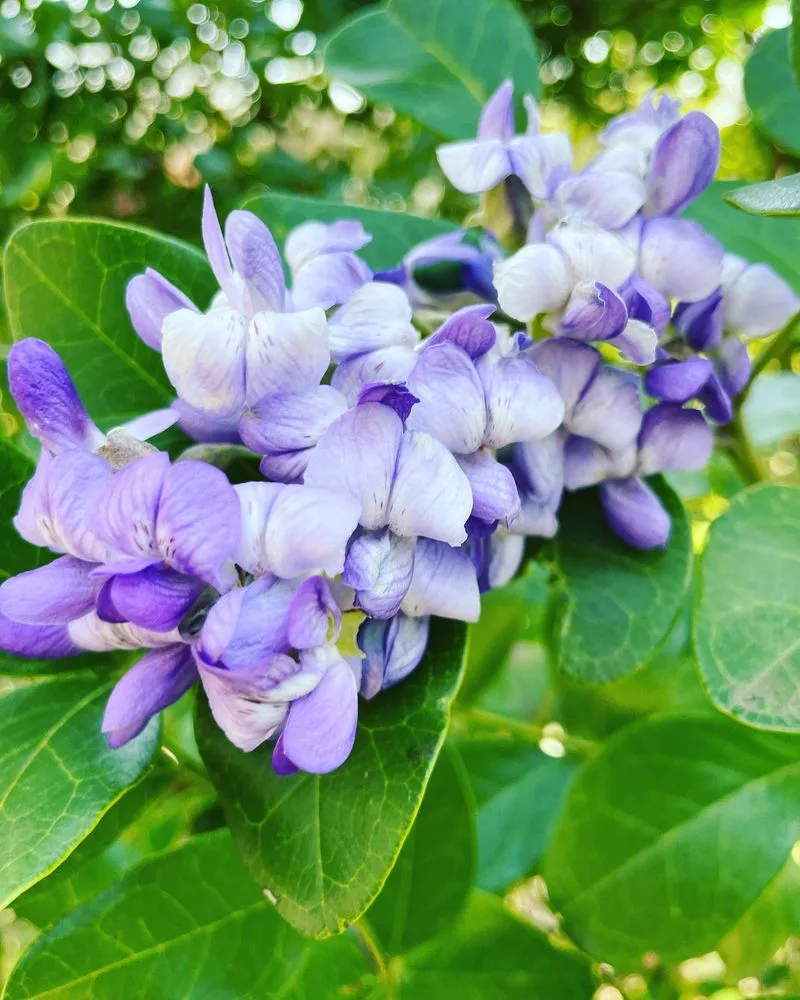
Renowned for its fragrant purple flower clusters reminiscent of grape Kool-Aid, the Texas Mountain Laurel is a sensory delight. This evergreen shrub thrives in rocky soils and withstands the challenges of dry climates effortlessly. Its glossy leaves provide an elegant backdrop to the vibrant blooms, making it a focal point in any yard. Once established, it requires little watering, aligning perfectly with sustainable gardening practices. This plant is more than just a pretty face; it’s a resilient companion for gardens striving for both beauty and environmental responsibility.
Silk Tree (Mimosa)

The Silk Tree, also known as Mimosa, captivates with its fern-like leaves and fluffy pink blooms. This tree adds a tropical feel to any garden, yet surprisingly, it’s quite drought-tolerant once established. Its canopy offers light, dappled shade, making it a delightful retreat in sunny spots. Known for its rapid growth, it can quickly become an integral part of your landscape design. The Silk Tree’s ability to thrive with minimal water makes it a pragmatic choice for those looking to combine beauty with eco-friendly gardening.
Chitalpa
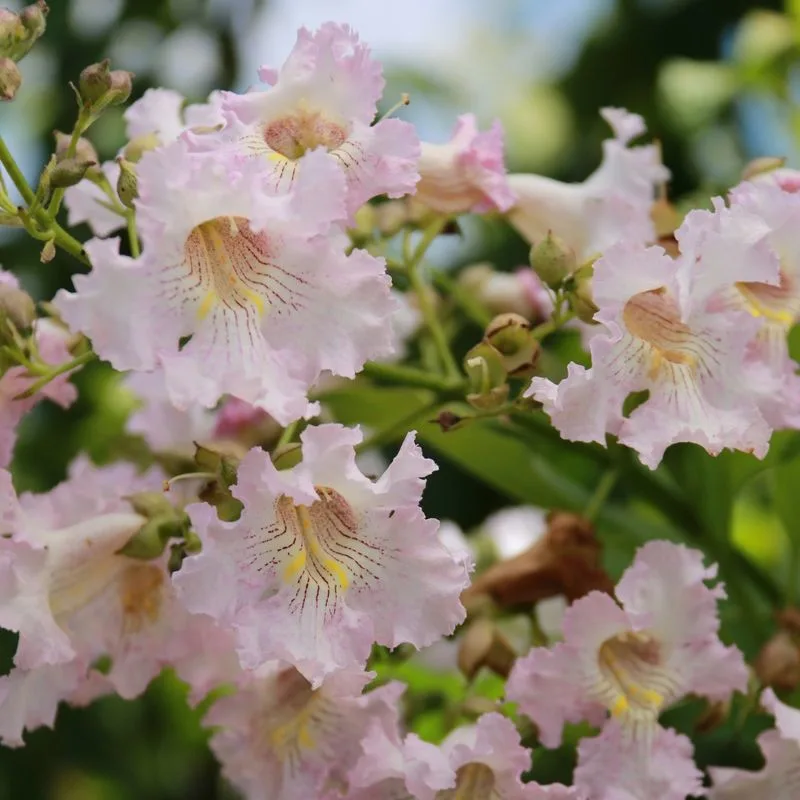
Combining the best traits of its parents, the Chitalpa offers lovely trumpet-shaped blooms in shades of pink or white. These flowers attract hummingbirds, enhancing the vibrant life in your garden. Despite its exotic appearance, it tolerates drought and poor soils with ease. This hybrid is well-suited for sunny locations, providing shade and beauty. As it grows, its broad canopy offers shelter and relief from the sun. The Chitalpa is a testament to the beauty that can arise from resilience and adaptability in harsh conditions.
Golden Rain Tree
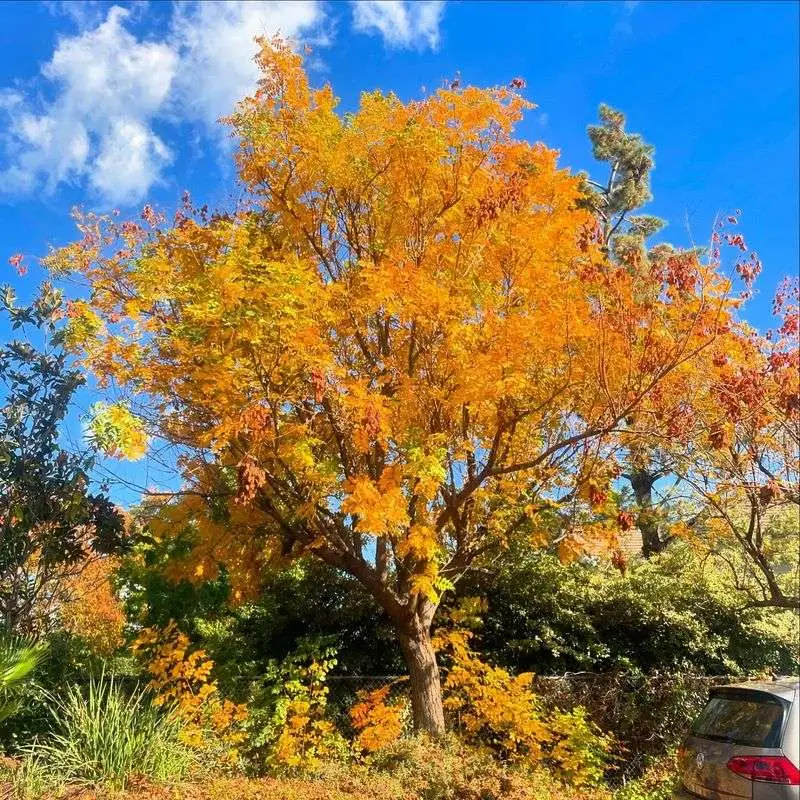
The Golden Rain Tree is a sight to behold with its cascading yellow flowers and unique lantern-like seed pods. This tree is not only ornamental but also adaptable to various soil types. Its moderate water needs make it suitable for drought-tolerant landscapes. As it matures, it transforms into a graceful shade provider, perfect for outdoor gatherings. The tree’s changing colors throughout the seasons add a dynamic element to your yard. Plant it in a sunny spot to enjoy its golden charm and ecological benefits, inviting nature’s harmony into your space.
Cork Oak
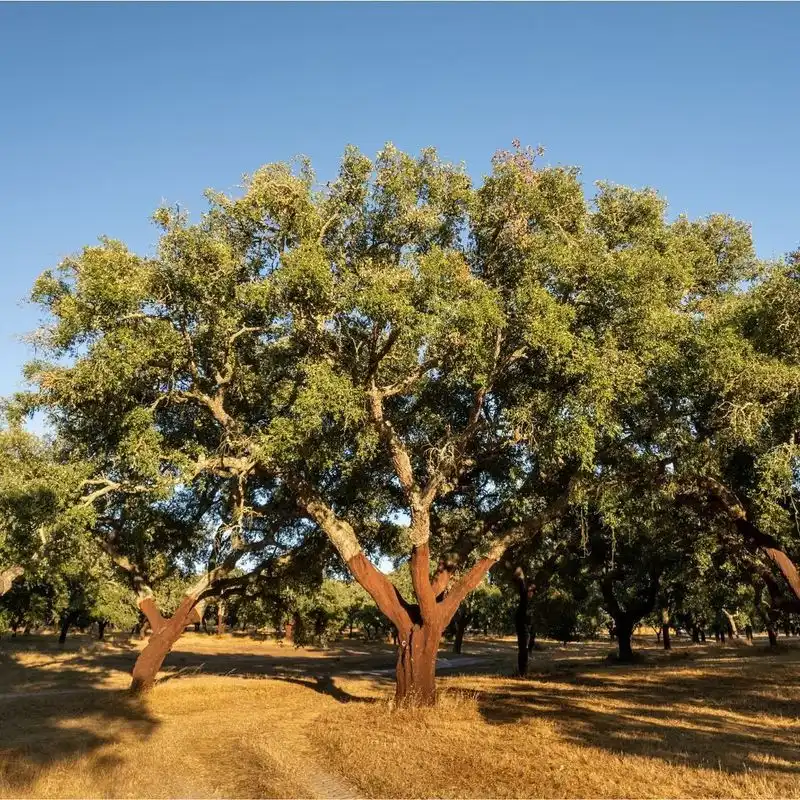
The Cork Oak is famous for its thick, textured bark, which is harvested for cork products. This majestic tree is well-suited for drought-prone areas, thriving in sandy or loamy soils. Its acorns provide food for wildlife, supporting biodiversity in your garden. As it grows, the Cork Oak develops a wide, spreading canopy, offering ample shade. Its resilience and adaptability make it a valuable addition to eco-friendly landscapes. This tree stands as a symbol of sustainability, providing beauty and utility without the need for abundant water resources.
Australian Tea Tree
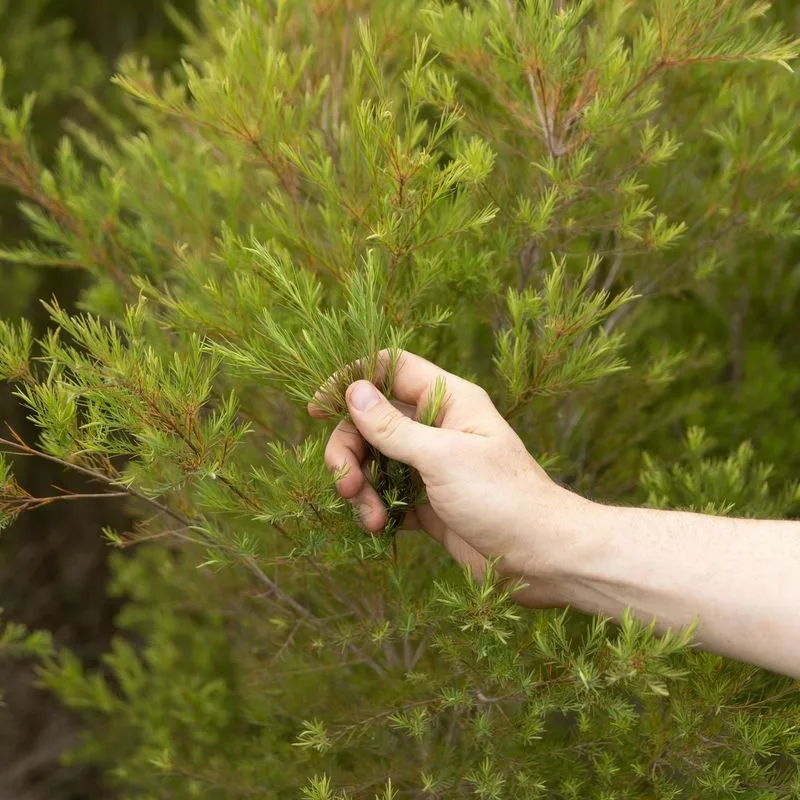
The Australian Tea Tree, known for its essential oil, features twisted branches and delicate white blooms. This tree excels in coastal and sandy conditions, making it ideal for drought-tolerant gardens. Its aromatic foliage releases a refreshing scent, adding a sensory layer to your landscape. Once established, it requires minimal care, standing resilient against dry spells. The Tea Tree’s unique appearance and beneficial properties make it a standout choice for eco-conscious gardeners looking to enhance their yards with both beauty and function.
Pomegranate Tree
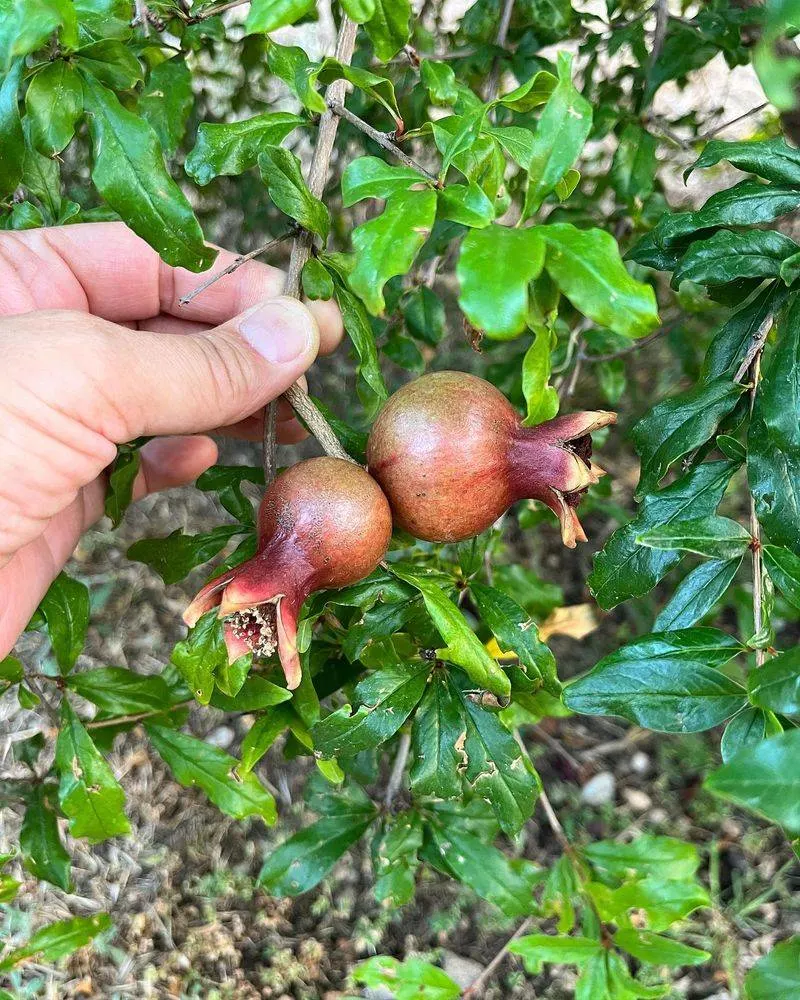
Pomegranate trees not only provide delicious fruits but also sport stunning red blooms. These trees are highly drought-tolerant, thriving in warm, sunny climates. The leathery skin of their fruit encases jewel-like seeds, turning your garden into a productive paradise. Versatile in use and appearance, they fit well into both ornamental and edible landscapes. Minimal watering is required once established, making it a wise choice for sustainable gardening. The Pomegranate Tree marries beauty with bounty, ensuring your yard remains vibrant and fruitful even in dry conditions.
Purple Leaf Plum
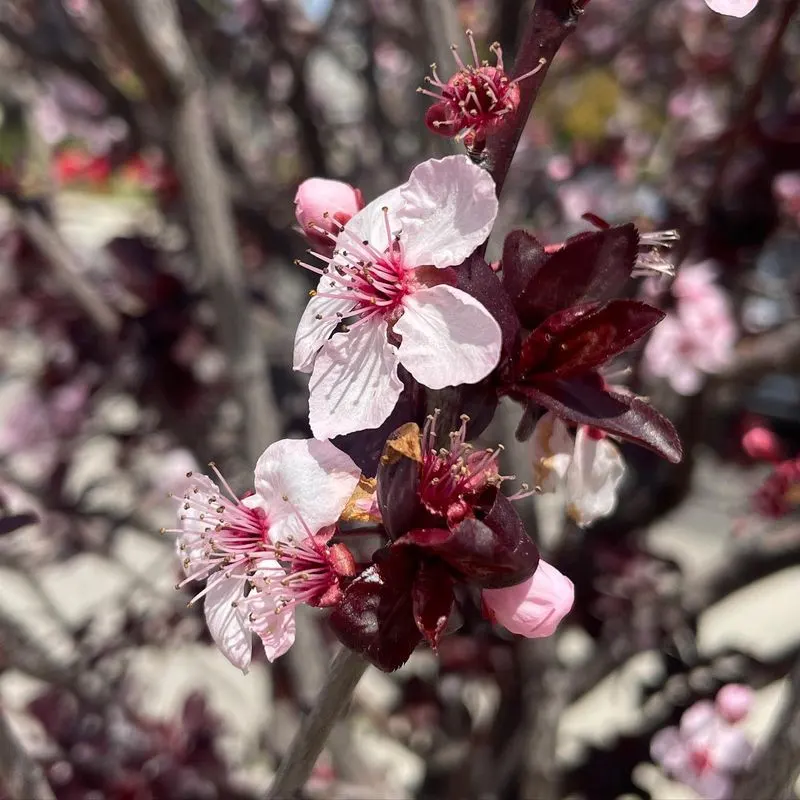
The Purple Leaf Plum captivates with its striking dark foliage and delicate pink flowers. This ornamental tree adds a touch of drama to your garden with its contrasting colors. It thrives in full sun and adapts well to various soil types, demanding minimal water once established. Its compact size makes it suitable for small spaces, while its seasonal color changes offer visual interest throughout the year. The Purple Leaf Plum is an elegant addition to any drought-ready landscape, combining aesthetic appeal with hardiness.
Western Redbud
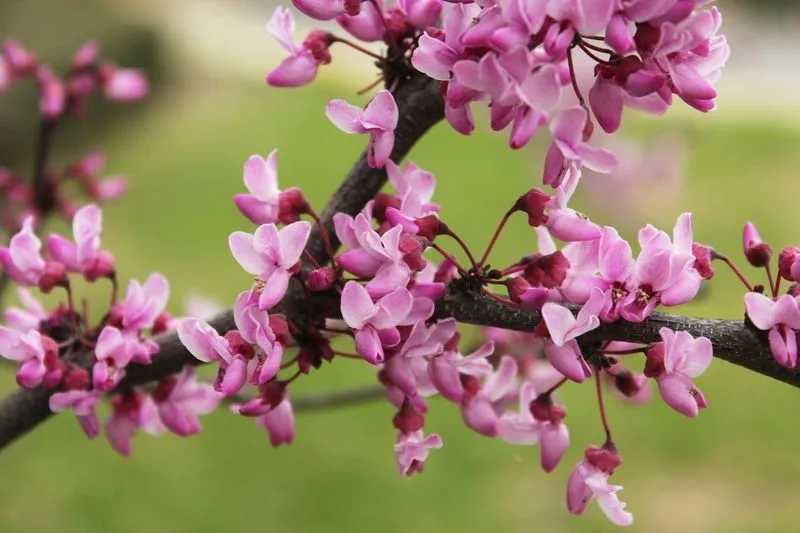
The Western Redbud is a showstopper with its magenta blooms that burst open in early spring. This native tree thrives in dry, rocky soils, making it perfect for xeriscaping. Its heart-shaped leaves turn a vibrant yellow in fall, adding seasonal interest. As a drought-tolerant species, it requires little water once established, offering beauty and resilience. Its blossoms attract pollinators, enhancing the ecological value of your garden. The Western Redbud is not just a tree but a celebration of color and sustainability in your outdoor space.

